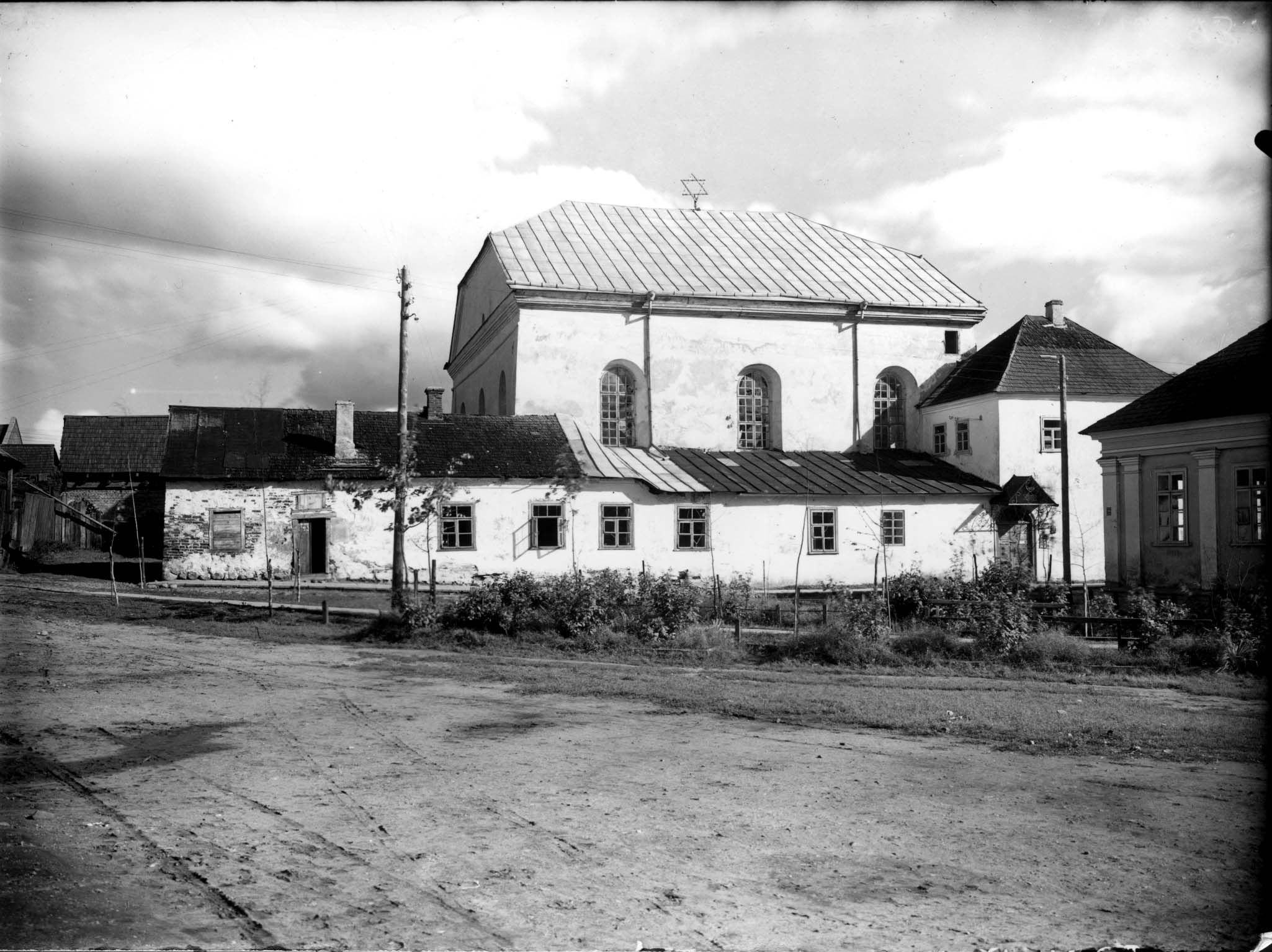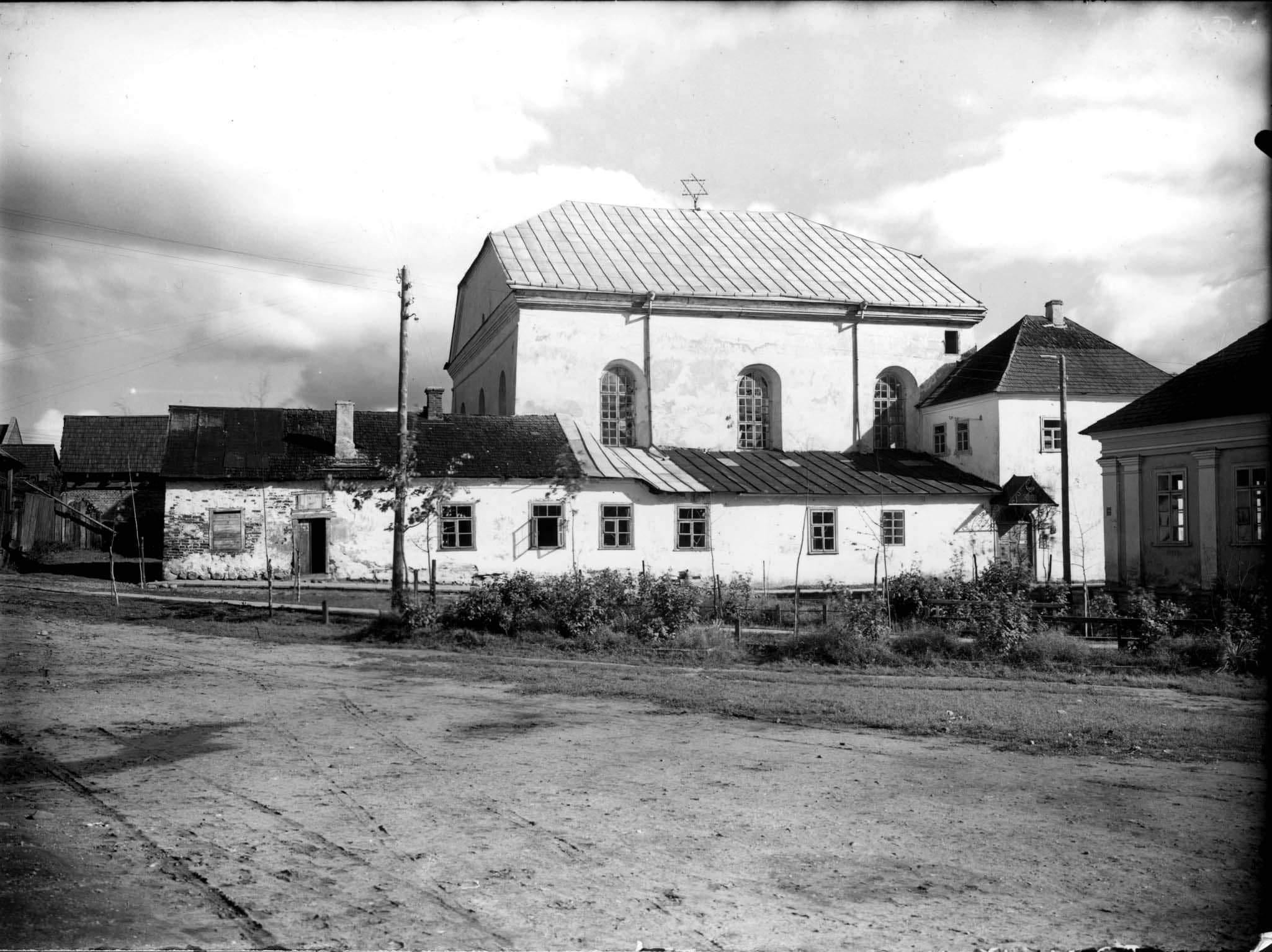

Nowogrodek

During the period of Polish rule (1921-1939), the Jews of the town developed a modern Jewish educational system, including the Hebrew Tarbut school and the Yiddish Tsisho school. Traditional heders and yeshivot flourished in the town. Different political organizations and institutions were also active in Nowogródek, particularly diverse Zionist movements as well as the Bund.
On the eve of World War II, 6,500 Jews lived in the town, comprising half of the total population.
In September 1939, following the Ribbentrop-Molotov Pact and the German invasion of Poland, Nowogródek was absorbed into the Soviet Union. During this period, many Jewish refugees from western parts of Poland settled in the town.
With the outbreak of war between Germany and the Soviet Union on June 22, 1941, some Jews from Nowogródek managed to flee eastwards. German forces entered the city on July 4, 1941, killing dozens of Jews.
In December 1941, a ghetto was established in the area, in which the Jewish laborers and their families were concentrated.
The Jews of Nowogródek and its surroundings were murdered in a number of killing operations from July 1941 until May 1943.
After several mass killing operations carried out during 1941, some 1,300-1,500 Jews remained in Nowogródek, the vast majority holders of work permits and members of the Judenrat. They were concentrated in a ghetto located in the poor Peresieka suburb on the outskirts of the city. The ghetto was divided into twelve areas, and a member of the Judenrat was placed in charge of each. A small hospital was established in the ghetto by Dr. Berkman. The ghetto was extremely overcrowded, with about twenty people to a room. In the spring of 1942, the Germans murdered the members of the Judenrat and a new Judenrat was appointed, headed by Haim Isakovicz. During that period, the Germans transferred 3,000-4,500 Jews from surrounding localities to Nowogródek, transforming it into a workshop center for Jews in the area. The severe overcrowding in the ghetto caused a deterioration in the quality of life of its residents, and the Jewish Order Service took harsh steps to halt the frequent escape attempts.On August 7, 1942, another murder operation was carried out, in which some 3,000 of the ghetto’s residents, including children, were murdered outside the city near the village of Litowka, and another 500 were murdered in the area of the former barracks near the city.At this stage, about 1,250 Jews remained in the ghetto. After a while, the ghetto was divided into two parts: some 700 people with required professions and their families were moved into the buildings of the former courthouse, and the remaining 500 Jews stayed in the Peresieka ghetto. The ghetto residents persisted in their attempts to flee to the forests and find shelter among the partisan units and in the family camp established by the Bielski brothers, notwithstanding the opposition of the Judenrat and the Jewish Order Service.On February 4, 1943, a further murder operation was perpetrated in which some 500 Jews were killed. The survivors continued to toil in the workshops. On May 7, 1943, a selection was carried out among the professionals in the ghetto, which functioned as a labor camp. More than 300 Jews, mostly women and children, were murdered by the local police and a Lithuanian unit in Hardzilowka, near the courthouse. About 300 Jews, mostly artisans, remained in the ghetto.Following this massacre, a Jewish underground formed in Nowogródek in the spring-September of 1942. An underground council with forty-two members from various parties was established, headed by Yaakov Cohen. A number of ghetto inhabitants managed to escape, primarily with the assistance of Jewish emissaries sent from the partisan battalion of the Bielski brothers. The underground planned and organized an escape, and for three months a 250-meter-long tunnel was dug, through which the 233 Jews remaining in the ghetto tried to escape on September 26, 1943. About 170 of them succeeded in reaching the forests, where they joined the Bielski partisans’ brigade. The rest were shot and killed either during the escape or afterwards, when they were caught by the Germans in the forests.
Nowogrodek was liberated by the Red Army on July 8-9, 1944.

